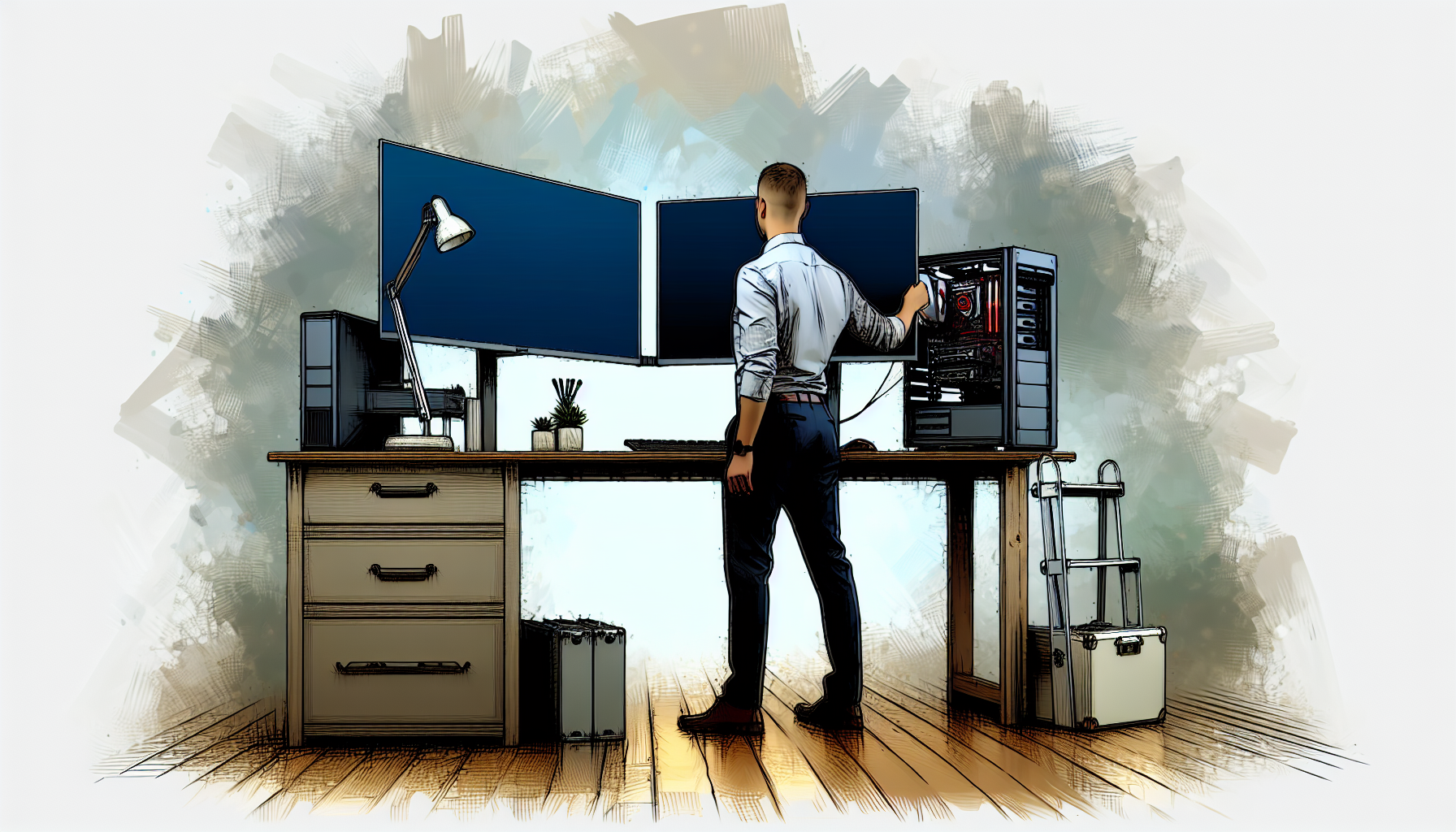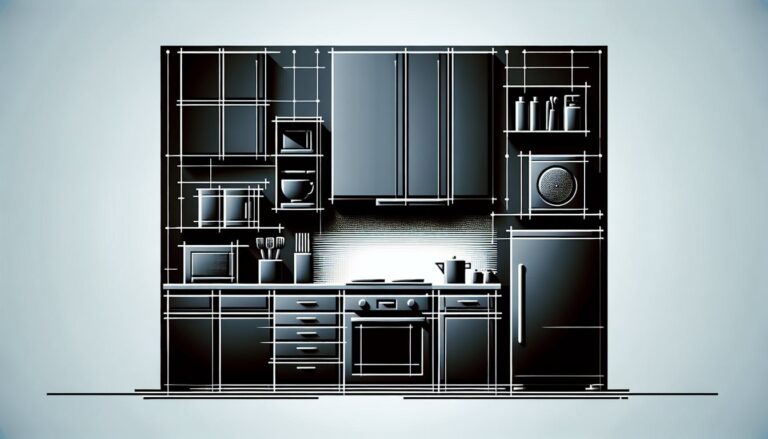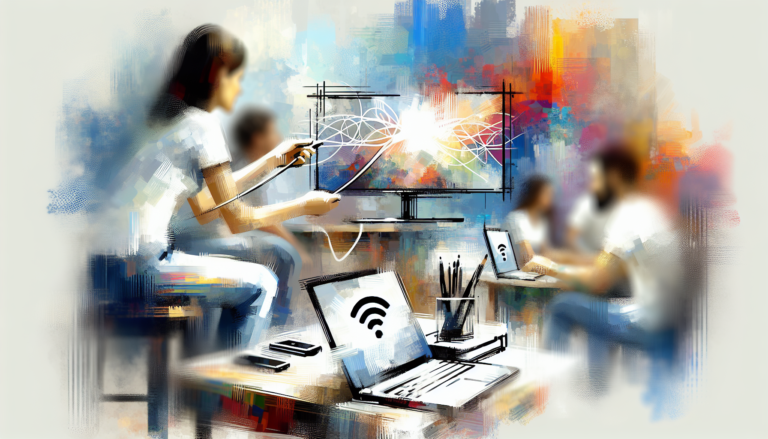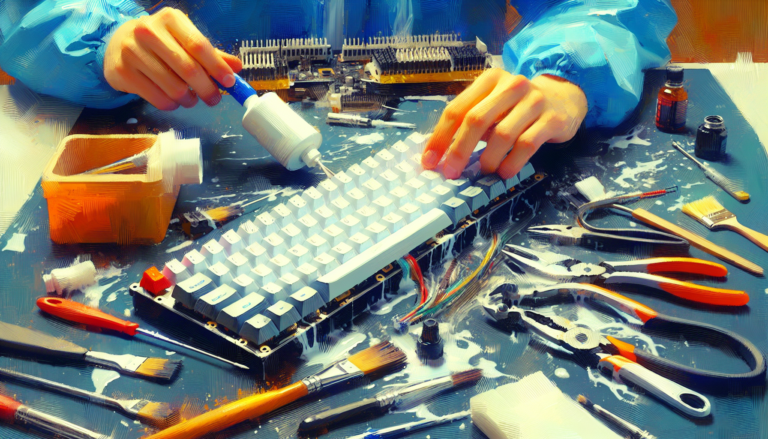Boost Your Workflow: How I Set Up a Dual-Monitor Workstation for Productivity
Setting Up Dual Monitors
Setting up a dual-monitor workstation was quite the adventure. I had to make sure my graphics card was on the same page as my display dreams and that I picked the right monitor sizes for a smooth work groove.
Checking Graphics Card Compatibility
First things first, I needed to make sure my graphics card could handle a double trouble setup. I hopped over to the manufacturer’s website to dig through the specs to see if it could manage two screens. I wanted to know all about what resolutions and how many displays it could juggle without dropping the ball. Once I got this down, I breathed easier knowing my workflow would run like clockwork.
Choosing Monitor Sizes
Next, I dove into the world of monitor sizes. I wanted to keep things looking sharp and uniform, so I aimed for equal sizes. A 24-inch screen might be the go-to, but I went big with the trendy 27-inch. It was important to match the screen size with the right resolution to dodge the dreaded fuzziness. Picking the right monitors made my workstation not just look great but work great too, giving my productivity a little extra kick.
By digging into these two things — graphics compatibility and screen sizes — I set the stage for a workspace that’s all about getting stuff done without hassles. Now I get a wide-angle view of tasks, which means smoother gaming, better efficiency, and happy neck muscles. A broad desk, along with a dual-monitor stand or arm, kicks things up a notch in terms of ergonomic bliss and usability. It’s all about making that screen space work for me, day in and day out.
Screen Arrangements
Setting up two monitors isn’t just about plopping them on your desk and calling it a day. It’s about crafting a workspace that gets stuff done without stressing you out. Deciding on how to position those screens makes a world of difference. Now let’s chat about some popular setups: symmetrical versus asymmetrical, and the mix of an ultrawide with a regular ol’ monitor.
Symmetrical vs. Asymmetrical Setup
Alright, symmetrical setup—think of it like twins standing side-by-side, perfectly balanced. You’ve got two identical monitors hanging out. This is perfect if you’re big on tasks that require equal focus on both screens, like staring at spreadsheets all day or revisiting docs. Everything looks the same, which makes it easy to navigate around them without missing a beat.
Now, flip the script a bit. With asymmetrical setups, you’re free to mix and match. Maybe you throw a wide monitor in landscape mode for the main hustle and a smaller one standing tall on the side for all your reading or coding needs. Think of it as yin-yang of workspace—it’s about having your options open and adapting to what works best for your style.
Picking one over the other? Totally up to how you roll and what your eyes enjoy the most. It’s like building your dream workstation one screen at a time.
Ultrawide Monitor Pairing
Ever considered pairing the long beauty of an ultrawide monitor with a standard looker? It’s kinda like a match made in digital heaven. Ultrawides are loved because they give you one big uninterrupted view—no annoying borders to break your feng shui. You might think of them as the smooth, panoramic answer to dual screens.
Picture this: Doing some heavy-duty video editing or diving deep into graphics or tons of numbers? Ultrawides ease the hustle with all that extra real estate (IE blog), like having your own media wall. But toss in a traditional monitor, and you’ve got some serious versatility.
The blend of one ultrawide screen with a regular monitor means you get that sweeping cinematic view plus a space to park your email or Twitter feed. This concoction can supercharge your productivity and maybe even your peace of mind, as suggested by experts in the dual-monitor scenario (Ergonofis).
Mess around with different setups, see what tickles your fancy, and land on the perfect combo for your daily grind. Whatever you end up with, make sure it adds some spark to your workday.
Mounting Monitors
Thinking about boosting your workspace with two monitors? Let’s chat about the perks of desk mounts and why the VESA mount system is your new best friend for setting up those screens just right.
Benefits of Desk Mounts
Desk mounts are a lifesaver for arranging your extra screens. They let you clear off some of that crowded desk space, giving you room to breathe and adjust your monitors to whatever spot suits you best. It’s like having a magic wand for your posture—suddenly, long workdays aren’t such a pain in the neck (literally).
What’s great is you can tweak the monitors’ height, tilt, and spin them around until they fit perfectly with your needs. It’s like personalizing your workspace for maximum comfort and showing those neck cramps the door. And let’s not forget the luxury of a tidy desk. With desk mounts, cords aren’t snaking all over the place, and everything looks sleek and organized. Got stiff shoulders and tired eyes? Getting those screens eye-level can really help, and these mounts make hitting that sweet spot easy.
VESA Mount System
Many monitors come ready with VESA mounts, letting you hook them up almost anywhere you please with minimal fuss. Before you go snapping up a monitor arm, check that you’ve got the right VESA size—the little measurements between those mounting holes. This ensures everything fits together without a hitch.
When picking out a monitor arm, make sure it can handle your screen’s size and weight. Nobody wants a screen crashing down in the middle of a big project, right? The beauty of the VESA system is you can swap screens, shift stuff around, and perfect your dual-monitor setup to fit your work style.
Desk mounts alongside the VESA mounts seriously step up your work game. They turn your setup into a powerhouse of productivity while keeping things comfy and looking sharp. Thinking of upping your work performance and comfort level? Quality desk mounts and that trusty VESA system are the way to go for your computer screens.
Connecting Monitors
Alright, let’s get those monitors set up like a pro! When you’re looking to boost your productivity with a dual-monitor setup, knowing your way around video connections can be the game-changer. Whether you’re dealing with VGA, HDMI, DVI, or DisplayPort, these little plugs are your ticket to dual-screen glory. Grab the right cables and plug ‘em into your computer and monitors for a setup that’ll make your workflow smoother than a hot knife through butter.
Understanding Video Connections
Each type of connection comes with its own perks and quirks. Look at these popular options:
- HDMI (High-Definition Multimedia Interface): This one’s a rockstar for both sound and picture, showing up in loads of new monitors and graphics cards.
- DisplayPort: Known for super-speedy data transfer and the ability to run multiple screens. Perfect for a multi-monitor setup.
- DVI (Digital Visual Interface): It’s like the grandma of digital video – reliable with great quality, especially if you’re rocking an older monitor.
- VGA (Video Graphics Array): This old-school analog option is slowly fading into the sunset due to its below-par image quality.
Match your video connection choices with your monitors and graphics card for top-notch performance and you’re golden.
Using Adapters for Compatibility
Sometimes your gadgets don’t wanna play nice, and that’s where adapters save the day. These handy gadgets bridge any video connections gaps, letting all your monitors and computers get along.
Adapters can switch up the signal from one type to another – we’re talking about HDMI to VGA or DisplayPort to DVI – letting you nail that dual-monitor setup you’ve been dreaming of. Pick the right ones, and you’ll be laughing in the face of any compatibility hiccups.
Don’t forget to check your graphics card and monitor specs to make sure you got the right ports and cables. Stick with the same tech and version for top-tier performance and to steer clear of any connection dramas. High-end monitors might already come with a few cable picks, but double-checking they sync with your graphics card is key for a hassle-free setup.
Mastering those video connections, along with using the right adapters, lets you craft a dual-monitor setup that not only boosts productivity but creates an immersive workspace too. So, get creative, try out different connection and adapter combos to build that perfect setup that works hard for you and makes your workday more efficient than ever.
Configuring Dual Monitors
Alright, setting up those dual screens is like having an extra pair of eyes – not literally, but you get it, right? When you’ve plugged in both monitors and got them displaying right, suddenly your desk feels like a command center. More space equals more power to tackle stuff like a pro.
Display Configurations
Now, the modern-day PC is a wizard when it comes to juggling multiple screens. You’ve got choices! Want to stretch your desktop across both? Go for it. Need the same screen mirrored for a meeting? Easy peasy. Or how about working on different tasks on each monitor? That’s your call too. What matters is tailoring the setup to your daily grind so you can smash through your to-do list.
Hop into your computer’s settings to tweak everything. On Windows 10 or 11, just head to Display Settings. For all you Mac folks, hit up System Settings and find Displays. Make that screen space work for you.
Switching Between Configurations
Jumping from one setup to another on dual monitors is as smooth as flipping a light switch. Get comfy with changing between setups depending on what the task demands. It’s a real time-saver once you’ve nailed the knack for it.
Operating systems love to keep things simple – so most have easy-peasy switch methods. Want to sail through spreadsheets on one side or prep a slideshow on another? Knowing how to flip between these setups turns your workspace into a multitasking machine.
Pro tip: Dual monitors can boost your productivity by nearly half! Yep, 42% more efficient, according to some nerds who’ve done the math. But make sure your monitors are matching up perfectly to avoid the mouse getting lost, and tweak the scaling just right for that seamless feel across both screens. Dive into these configurations like a boss, and you’ll see your workstation turn into the ultimate productivity haven.
Productivity Benefits
You ever feel like staring at your computer screen is turning into a staring contest? Well, dual monitors might just be the trick to widen your view and up your game. It’s not just an extra screen – it’s your productivity sidekick. Turn that small desk into a workspace powerhouse and work your magic on whatever needs doing.
Enhancing Workflow Efficiency
Imagine developers, artists, and anyone who uses a computer regularly entering a world where flipping between coding, chatting, and hunting for reference pics is as smooth as butter. With dual monitors, they can dig into projects without a hitch. It’s like spreading peanut butter and jelly on the same slice of bread, making multitasking fluid and sweet (CDW).
A big screen opens up a world where gaming’s better, work’s more slick, and neck-pain’s a distant memory (Ergonofis). You’ve got room to spread out, clock of peace, and productivity dialing up. It’s like music to your workflow, where efficiency’s the chorus and organization’s the tune (Business.com).
Task Specific Benefits
Turns out, more screens can equal more done. Folks who rock the multi-monitor life say they see productivity jump from nine to, get this, fifty percent! Imagine shaving down hours spent squinting at spreadsheets (IE blog; Business.com).
With more room to roam on your monitors, task-juggling gets less circus and more balance. It’s awesome how easily you hop from email to doc to spreadsheet without breaking a sweat. You’re not just working – you’re orchestrating a productivity symphony like a pro.



